Transitioning to Montessori: Freedom within Limits (Part 2 of 5)
Every fall, children transition to our Montessori kindergarten or elementary program from other preschools or elementary schools. What can parents do to help with this transition? In this series of blog posts, we lay out a few Montessori principles that apply at the later preschool and early elementary school level. Our focus is on children who transition into Montessori during their kindergarten through 2nd grade years, but many of the ideas suggested here are helpful for preschool children, too.
“Respect all reasonable forms of activity in which the child engages and try to understand them.”
“To let the child do as he likes when he has not yet developed any powers of control is to betray the idea of freedom.”
— Dr. Maria Montessori
In a traditional elementary school, much activity is adult-led. There’s a schedule of subjects (40 minutes of writing, then 30 minutes of math, followed by 15 minutes of recess/snack, and 30 minutes of quiet reading time, and so on.) The teacher leads a lesson, often for the whole class or a sub-group of children. Children have little say on what they work on, where they work and when they work on certain things.
In contrast, in a Montessori preschool/kindergarten or elementary school, children have what we call freedom within limits. We like to give children space to work things out on their own, with the teacher acting as their guide, rather than telling them what to do.
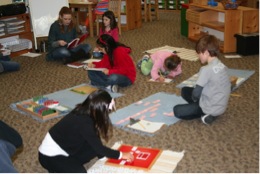
Throughout the day in the Montessori preschool, kindergarten or elementary schools, there are uninterrupted work periods of 2-3 hours each. During this time, the children receive individual or small-group lessons. But lessons typically take only 10-20 minutes each. Much of the time is not tightly scheduled by adults. Rather, it is an opportunity for a child to choose certain activities (guided, of course, by the teacher, who has observed the child and tailored his curriculum to his needs.) A child may choose to start with the challenging math problem while she’s fresh in the morning. Another one may ease into the day by doing some independent reading.
As long as children are engaged in purposeful activities, the teacher will not actively interrupt. Instead, he may step back and observe the child, and only get involved when an activity is complete, for example, to sit down with a child and provide guidance on a piece of writing. (In contrast to traditional elementary schools, where teachers do a lot of correcting of work, in Montessori, children often have access to control cards and eagerly correct their own work.)
This type of freedom, however, is not an unlimited free-for-all. It is the result of careful preparation, and of a profound invisible structure provided by the teacher and the materials. A child earns independence over time. For instance, a new child may be asked to check in with a teacher several time throughout the day, or be given a detailed daily work plan. A child who has a hard time focusing on work when seated next to a friend may be redirected to a separate table to work on alone. An experienced 3rd grader, on the other hand, may have whole days where he works largely independently, or may have the freedom to pursue joint projects with a classroom friend. Purposeful, self-managed work becomes the ideal to which all of the children aspire.
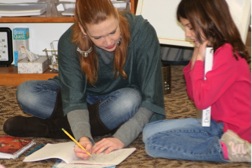
Most students who come to Montessori kindergarten or elementary school from a play-based preschool or traditional elementary school program aren’t used to this level of freedom. We recognize that there’s some adjustment needed for such students, and so we slowly build up their capabilities so they can take on more responsibility.
As a parent, you can help by simultaneously ceding control at home, and handing more responsibility to your child.
For example, if you find yourself managing her morning routine, urging her to get dressed or to have breakfast or to brush teeth, you may want to consider transitioning that responsibility to your child. Do so in a careful, slow, step-by-step process, so she experience success:
- Sit down and talk. Let her know that you trust her to become more independent, and that you’ll work with her.
- Make a plan and write it down. Identify the tasks your child will do on her own (get dressed, make the bed, fix breakfast, prepare her lunch.) Make sure she can do the tasks (see the post on independence), and coach her where needed. Then create a routine chart together, listing each key step (add photos for younger children who still struggle with reading.)
- Hand over responsibility. Put the chart somewhere accessible. Instead of reminding your child to do a task (‘it’s time to brush your teeth now’), point her to the task (‘we’re done with breakfast. What’s next on your chart?’)
- Discuss progress. Rather than having the child get in trouble if she doesn’t meet expectations, ask her what went wrong? Does she not want to do it on her own anymore? Is there some other task she’d rather try first? Make it clear to your child that you are there to support her pursuit of independence—but also that you will hold her to her own commitments.
Other easy areas for handing over control could be getting ready for an outing (e.g., packing the things needed to go to the pool), or getting ready for bed.
Entrusting your child with more responsibility at home will help ease the transition into the freedom within limits environment of Montessori kindergarten and elementary school. And as a nice side benefit, it may also allow you to nag less and have more fun with your child!
- Read more in our Transitioning to Montessori blog series:
- Transitioning to Montessori: Independence (Part 1 of 5)
- Transitioning to Montessori: Freedom with Limits (Part 2 of 5)
- Transitioning to Montessori: Motor Skills and Indirect Preparation (Part 3 of 5)
- Transitioning to Montessori: The Follow the Child Principle (Part 4 of 5)
- Transitioning to Montessori: The Prepared Environment (Part 5 of 5)

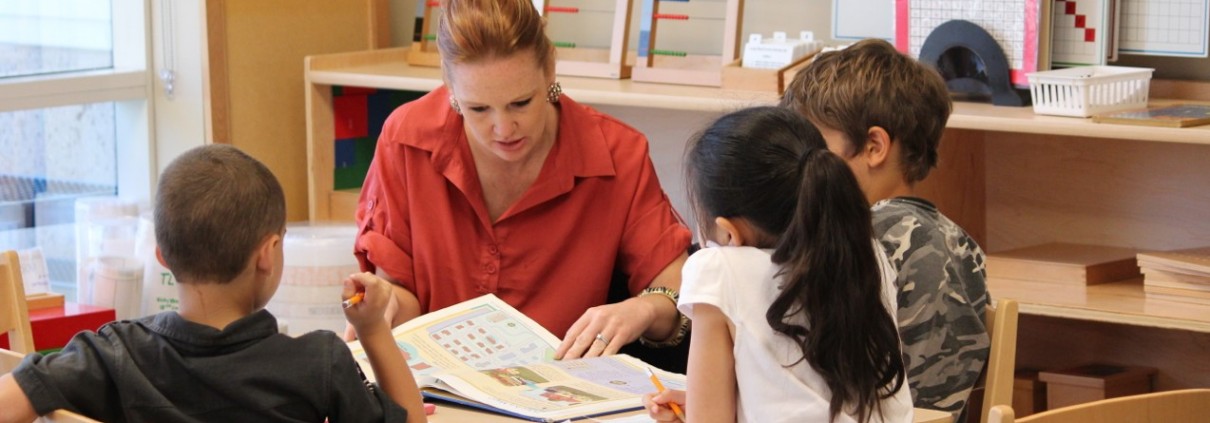



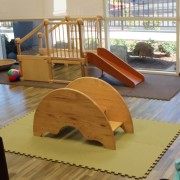
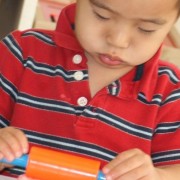
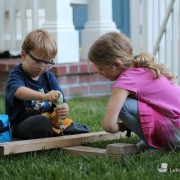





Trackbacks & Pingbacks
[…] would think that I would have used my knowledge of the “freedom within limits” philosophy from my Montessori background to avoid my somewhat recent devolution into a hot mess. […]
Comments are closed.